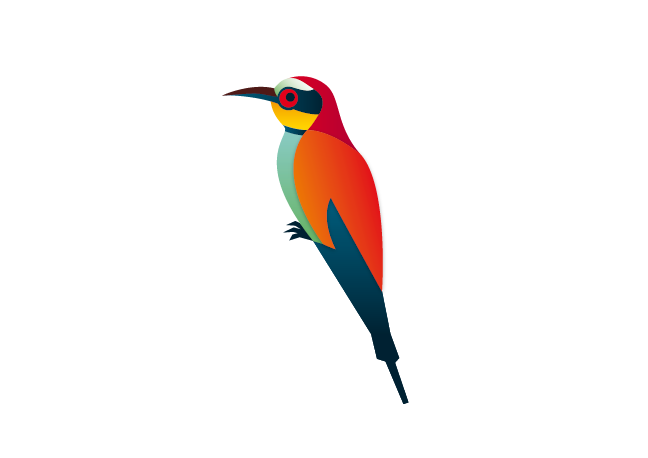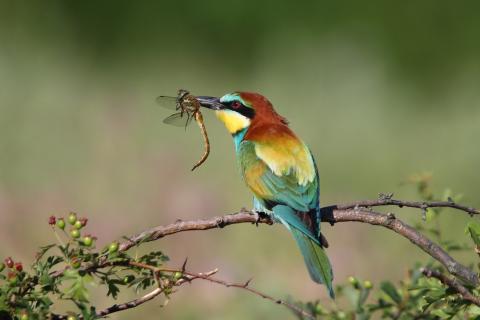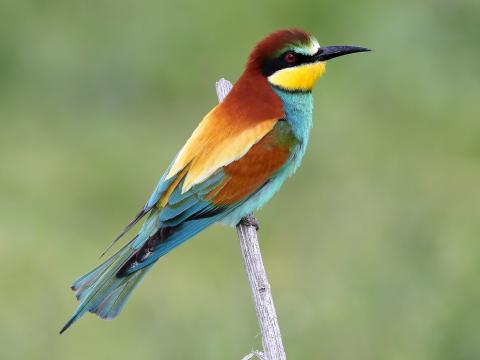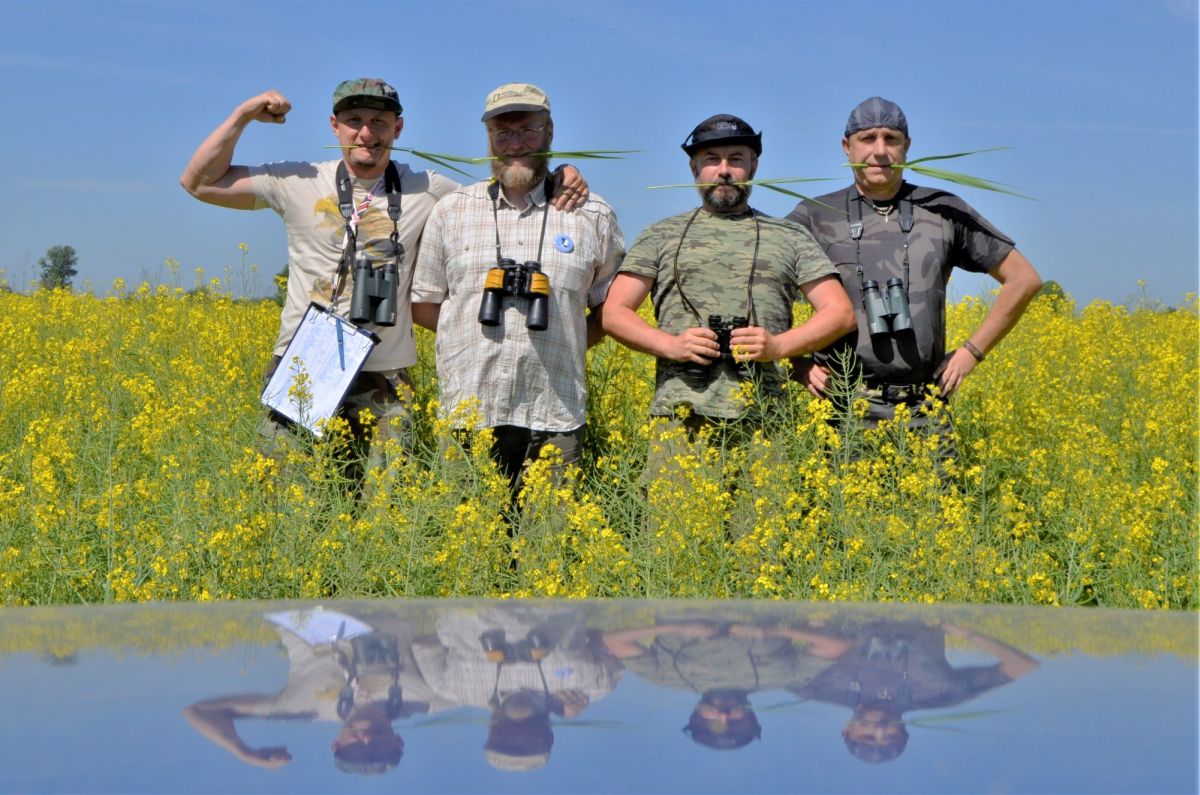Basic information
Bee-eater is one of the most colorful birds in Europe. A bottom of its body is blue-green and on a top you can mainly see red and orange although there are some green and blue shades there. Under a beak you can see vast yellow stain, and a black stripe crosses a red eye. In spite of a great bunch of colors it is not that easy to see it on meads full of flowers where it lives. What is helpful in observing this bird is its willingness to seat on wires, remote trees and other elevated areas where they can look out for insects to eat.
How to tell the difference between a young Bee-eater and an adult?
Young bee-eater is much less bright and smaller than adults. Chicks do not have longer middle feathers in their tails either.
What do they eat?
Mostly they eat insects caught in a flight. They usually hunt for bees, wasps and humble-bees and occasionally coleopters and dragonflies. Each day during feeding period they have to catch insects equal to mass of 225 bees.
Bee-eaters’s nest
Bee-eater looks for open areas with diversified landscape, often near to rivers or other water reservoirs. They are building nests on clay scarps, where they dig a hole ended with a breeding chamber. Bee-eaters like to socialize and live usually in stocks helping each other to raise their chicks together.
Wintering
Wintering sites of bee-eaters are located in Africa, south of Sahara desert.
Population of bee-eaters in Europe
Bee-eaters stay mostly in southern and south-eastern part of Europe.
Migration information
Bee-eaters just like white storks have two main migration tracks. Birds from south-western Europe go through Strait of Gibraltar and directing to south fly through Sahara. They head for western Africa. Birds from eastern Europe go to southern Africa via Israel.
When chicks grow up bee-eaters form large, even of over 120 birds, groups. Later these big herds divide into smaller ones.
Birds encounter many difficulties and dangers during their journeys. Some are caused by people. There are countries where bee-eaters are being killed by bee-keepers who treat them as pests. Scientists estimate one out of three bee-eaters leaving Europe in autumn will come back in spring.

Bee Eater
records






